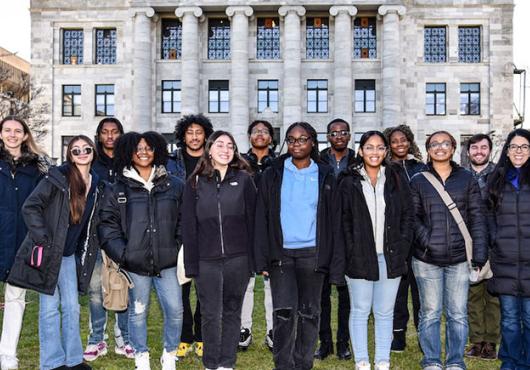This article is part of Harvard Medical School’s continuing coverage of COVID-19.
Two days after the onset of a cough and runny nose, a patient’s symptoms progressed to body aches, fatigue, cough, and shortness of breath. A rapid antigen COVID test came up positive; his doctor advised rest, hydration, and avoiding close contact with others. Despite following these recommendations, three weeks later, he still had persistent fatigue and a lingering cough that kept him up at night.
At the patient’s next visit, five weeks after his initial diagnosis, his primary care provider suggested that he may have long COVID.
Evolving data on long COVID
Currently, published medical literature suggests that long COVID occurs in up to 80 percent of patients following an infection. The U.S. Centers for Disease Control and Prevention suggests that nearly one in five American adults who have had COVID-19 now have long COVID. A conservative estimate from the Brookings Institution suggests that long COVID may be keeping as many as 4 million Americans out of work.
Long COVID, considered a silent pandemic by many, is running parallel to the COVID-19 pandemic. Primary care offices across the United States are seeing patients with possible long COVID, who may experience long COVID symptoms anywhere from weeks to years after their original infection.
Science & Medicine, Delivered
Harvard Medicine magazine in your inbox
Many people know that COVID can have lasting effects on the lungs and heart but are unaware that it can affect a person’s skin, muscles, joints, digestive tract, menstruation, mental health, and more. The varied nature of post-COVID conditions may represent a source of clinical confusion.
“COVID-19 impacts the entire body, which makes primary care management challenging for many providers. The information on long COVID is constantly evolving. There can be too much information, creating confusion among patients and providers alike. We are still learning why specific long COVID symptoms are present for certain people,” said David Duong, HMS instructor in medicine at Brigham and Women’s Hospital and director of equity, access, and advocacy at the HMS Center for Primary Care.
“One patient may experience dizziness and sleep problems while another has chronic diarrhea or a rash,” he said. “It’s critical for clinicians to stay up to date on the latest data so they’re able to better diagnose and co-manage long COVID with their patients.”
Health inequities and long COVID
From limited access to preventive care to increased risk for preexisting conditions, the reasons that the most vulnerable communities and groups are more susceptible to long COVID are many. Certain populations in the U.S. experience higher rates of diabetes, hypertension, obesity, asthma, heart disease, and cancer, conditions known to increase the risk for severe COVID-19 illness, which in turn increases the risk for long COVID.
“When implementing patient-management techniques, physicians must consider if a person has a disability, substance use disorder, and/or if they are immunocompromised,” Duong said.
“The physician’s approach to care should vary based on the individual patient’s needs, the patient’s other medical conditions and medications, and patients’ socioeconomic context. A co-management approach done in partnership with patients may help with the treatment of long COVID,” he added.
Case-based, interactive learning
Duong, along with other HMS faculty and the Center for Primary Care, have developed a course to bring clinicians together to review the latest clinical updates on long COVID, discuss their experiences further, and ask questions.
“The course is for primary care clinicians, covering aspects of dermatology, rheumatology, gastroenterology, pulmonology, mental health, and cardiology that present in our primary care clinics,” he said. “It’s also highly interactive and case-based. There’s so much to learn from the data and from each other.”
This live virtual course takes place on April 28, 2023, 9 a.m. to 5 p.m. ET. Learn more and register here.






